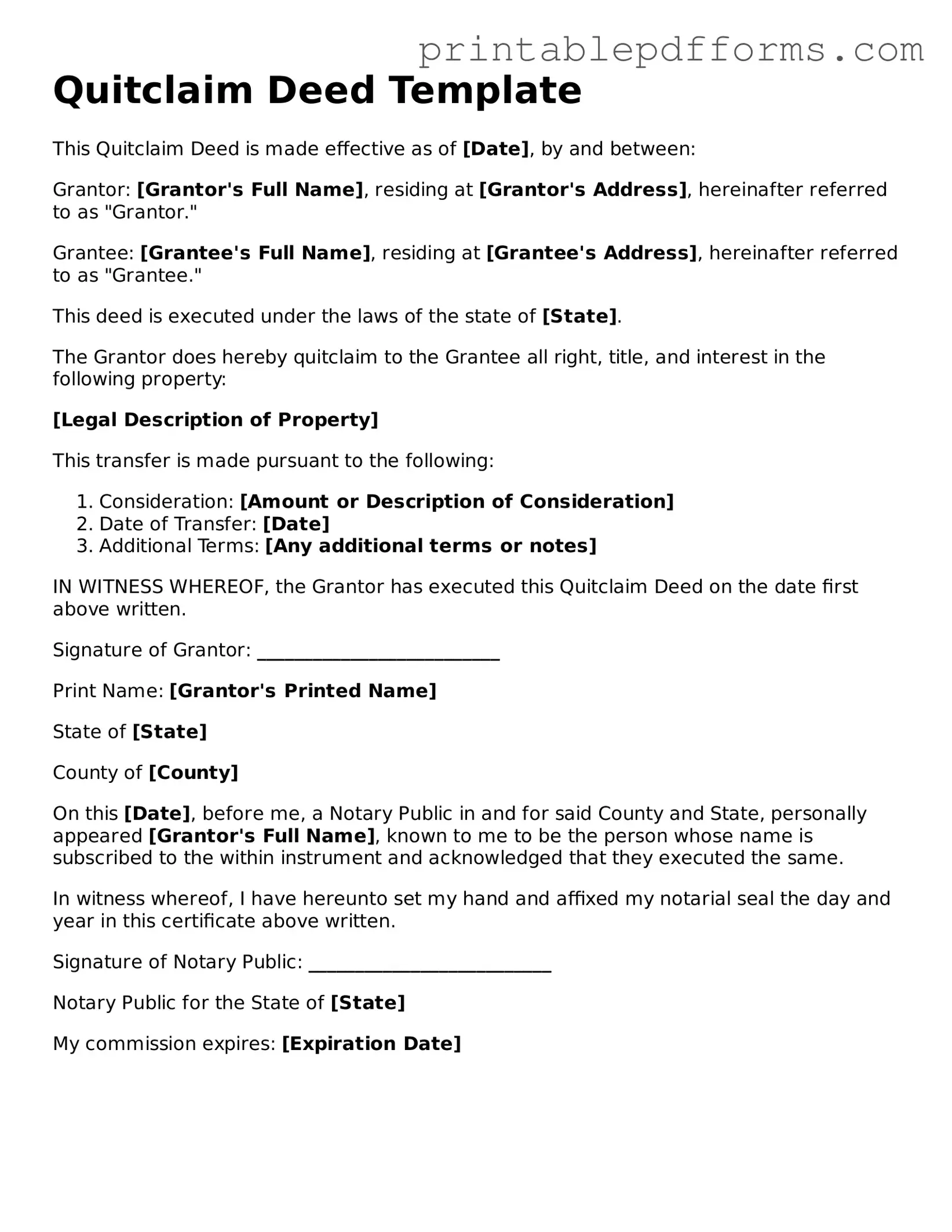Quitclaim Deed Template
This Quitclaim Deed is made effective as of [Date], by and between:
Grantor: [Grantor's Full Name], residing at [Grantor's Address], hereinafter referred to as "Grantor."
Grantee: [Grantee's Full Name], residing at [Grantee's Address], hereinafter referred to as "Grantee."
This deed is executed under the laws of the state of [State].
The Grantor does hereby quitclaim to the Grantee all right, title, and interest in the following property:
[Legal Description of Property]
This transfer is made pursuant to the following:
- Consideration: [Amount or Description of Consideration]
- Date of Transfer: [Date]
- Additional Terms: [Any additional terms or notes]
IN WITNESS WHEREOF, the Grantor has executed this Quitclaim Deed on the date first above written.
Signature of Grantor: __________________________
Print Name: [Grantor's Printed Name]
State of [State]
County of [County]
On this [Date], before me, a Notary Public in and for said County and State, personally appeared [Grantor's Full Name], known to me to be the person whose name is subscribed to the within instrument and acknowledged that they executed the same.
In witness whereof, I have hereunto set my hand and affixed my notarial seal the day and year in this certificate above written.
Signature of Notary Public: __________________________
Notary Public for the State of [State]
My commission expires: [Expiration Date]
